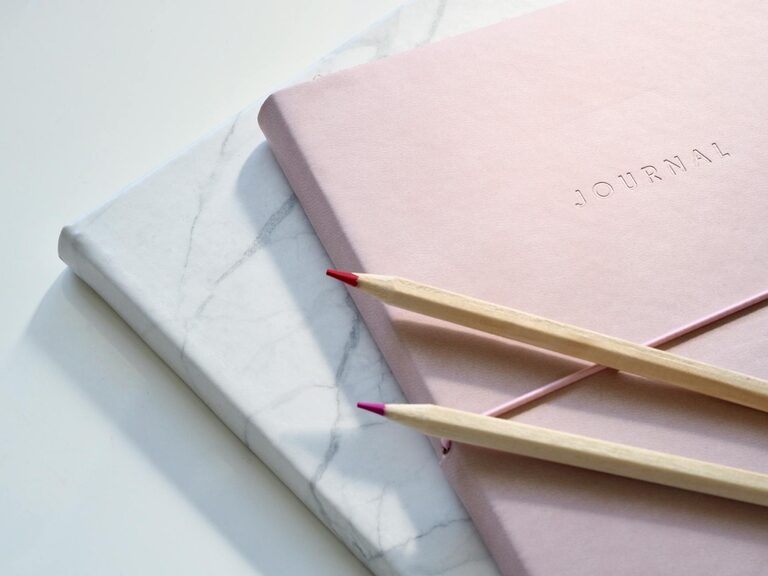Choosing the right notebook can make a huge difference in how often you use it and how effective it is for your needs. Whether you want to jot down ideas, track your goals, or organize your day, finding a notebook that fits your style and habits is key. In this post, we’ll guide you through important factors to consider to help you select a notebook you’ll actually enjoy using—day after day.
Why Choosing the Right Notebook Matters
A notebook is more than just paper—it’s a tool for creativity, organization, and productivity. When you pick a notebook that suits your preferences, you’re more likely to keep it with you and use it consistently. This builds good habits, helps you stay focused, and can even boost your motivation.
1. Identify Your Primary Purpose
Before you shop for a notebook, think about how you plan to use it. Different uses call for different types of notebooks.
Common Notebook Uses
– Journaling: You might want a notebook with lined pages for easy writing.
– Sketching or Drawing: Consider blank or lightly dotted pages for flexibility.
– Note-taking or Study: Grids or dot grids can help keep information organized.
– Planning or Bullet Journaling: A bullet journal often requires a notebook with dot grids.
– Project or Meeting Notes: Durable notebooks with sections or index pages can be useful.
Knowing your main purpose narrows down your choices and makes the decision easier.
2. Choose the Right Size
Notebook sizes vary widely, from pocket-sized to large sketchbooks. The size impacts portability and usability.
Common Sizes
– Pocket-sized (A6 or smaller): Great for quick notes on the go.
– Medium-sized (A5): Popular for daily writing and easy to carry.
– Large (A4 and above): Ideal for detailed notes or sketches but less portable.
Think about where and when you’ll use the notebook most. If you plan to carry it daily, a medium or smaller size is usually best.
3. Consider the Paper Type and Quality
The feel and performance of the paper can affect your writing experience.
What to Look For
– Thickness (GSM): Heavier paper (usually 80-120 GSM) prevents ink bleed-through.
– Texture: Smooth paper is great for pens; rougher paper works well for pencil or markers.
– Color: Most notebooks have white or cream paper. Cream can be easier on the eyes.
If you use fountain pens or markers, test the paper’s bleed-through and feathering before buying.
4. Decide on the Binding Style
The way a notebook is bound impacts durability and ease of writing.
Common Binding Types
– Spiral or Coil Binding: Opens flat and allows pages to be turned easily but can get bent.
– Thread-bound (Sewn) Binding: Durable and usually lies flat; pages won’t fall out.
– Glue Binding (Perfect Bound): Often found in softcover notebooks but may not open flat.
– Ring Binders: Allow adding or removing pages, offering flexibility.
Choose a style based on your preference for writing comfort and notebook longevity.
5. Pick the Page Layout
Page layouts vary and can support different activities.
Popular Layouts
– Ruled (Lined): Best for writing and journaling.
– Blank: Great for sketches and freeform notes.
– Grid: Useful for technical drawing, math, or detailed notes.
– Dot Grid: A favorite for bullet journaling, offering structure without the rigidity of lines.
– Combination: Some notebooks offer mixed page types.
Match the layout with how you intend to use the notebook.
6. Look for Additional Features
Many notebooks come with extras that can enhance your experience.
Features to Consider
– Elastic closure band: Keeps the notebook closed and protected when not in use.
– Bookmark ribbon: Easy to find your current page.
– Pocket folder: Handy for storing notes, receipts, or stickers.
– Numbered pages and index: Useful if you want to organize content systematically.
– Perforated pages: Allow easy removal without ruining the book.
Prioritize features that support your usage style.
7. Choose a Cover That Inspires You
The notebook’s cover is the first thing you see, so pick one that motivates you to write.
Cover Options
– Hardcover: More protective and long-lasting.
– Softcover: Lightweight and flexible.
– Leather or Faux Leather: Gives a premium feel.
– Paper or Cardstock: Often budget-friendly, with lots of design options.
A cover that matches your personality or mood can encourage regular use.
8. Set a Realistic Budget
Notebooks come in a wide price range. Think about how much you’re willing to spend.
– Higher-quality notebooks often pay off in durability and writing experience.
– If you’re experimenting or want something disposable, inexpensive options may work.
– Remember, a good notebook should motivate you to use it often.
9. Test Before You Commit
If possible, visit a store to handle different notebooks before buying. Check how the notebook feels, how the pages turn, and how your preferred pen writes on the paper.
Final Thoughts
Choosing a notebook isn’t just about style—it’s about finding a companion that fits how you think, work, and create. By considering your purpose, size, paper quality, binding, and personal preferences, you’ll pick a notebook you’ll look forward to using every day.
Happy writing!

